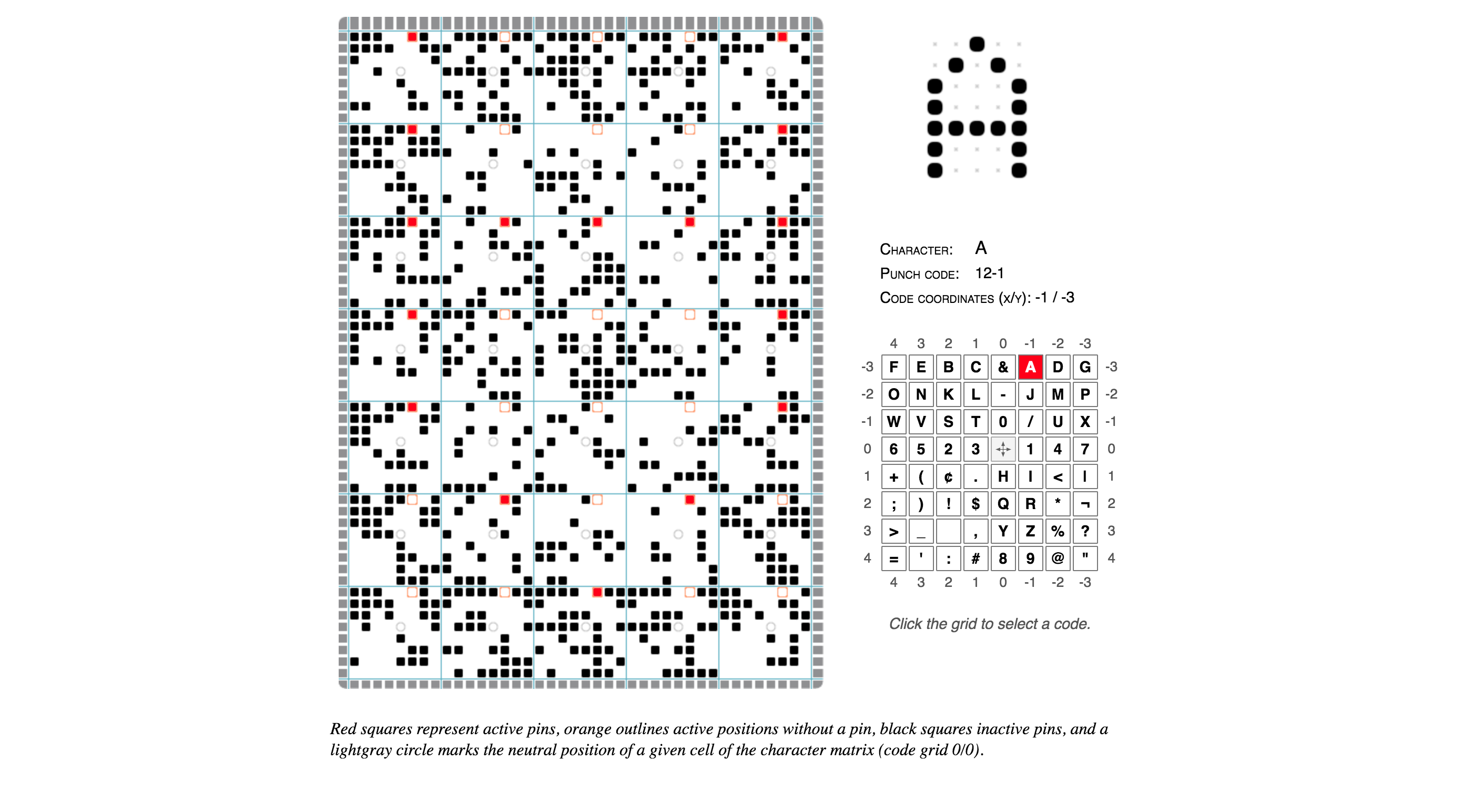Over on Hackaday, a good history of Hershey fonts, a still-surviving vector font format designed for use in the 1960s for optical cathode ray printers, printing characters onto microfilm at a time when computer displays were still a novelty (now they are useful for CNC milling, laser etching, etc.).
Tag: computing
-
Hershey Fonts

-
Ibm Punched Card Typography

Norbert Landsteiner wrote up a post about something that’s retro-technology-typography-nerdy beyond even my usual limits and understanding: a thorough explication and an interactive demo of how the late-1940s IBM 026 key punch (the typewriter keyboard/workstation machine that operators would use to poke the holes in the computer program punchcards of that era) was able to also print tiny human-readable letters and words at the top of the cards for easy reference.
Basically IBM encoded the alphabet and other special characters onto a clever postage stamp-sized print head that would run along the top of the punchcard, with wires to each “dot” enabling the printing of each encoded character in turn, effectively an early dot-matrix printer. (it’s not easy to see, but if you squint at the image you’ll see that the red dots form the “A” character, upside-down — you’ll see it more easily if you play with the demo and choose other characters)
-
Banaphone Invoked Computing
Banana Phone And Pizza Box Laptop PC – Invoked Computing For Ubiquitous AR
Usually “augmented reality” involves using a camera device to view an overlay of information or digital control on top of a video screen of some kind (say an iPhone or webcam/desktop), but this is kind of the opposite: having a camera+projector system that can map your intents onto everyday objects around the house for “invoked computing”.
Mostly I share this because I like this bananaphone demo:
There is a banana scenario where the person takes a banana out of a fruit bowl and brings it closer to his ear. A high speed camera tracks the banana; a parametric speaker array directs the sound in a narrow beam. The person talks into the banana as if it were a conventional phone.
(Via PhysOrg via ACM TechNews)
